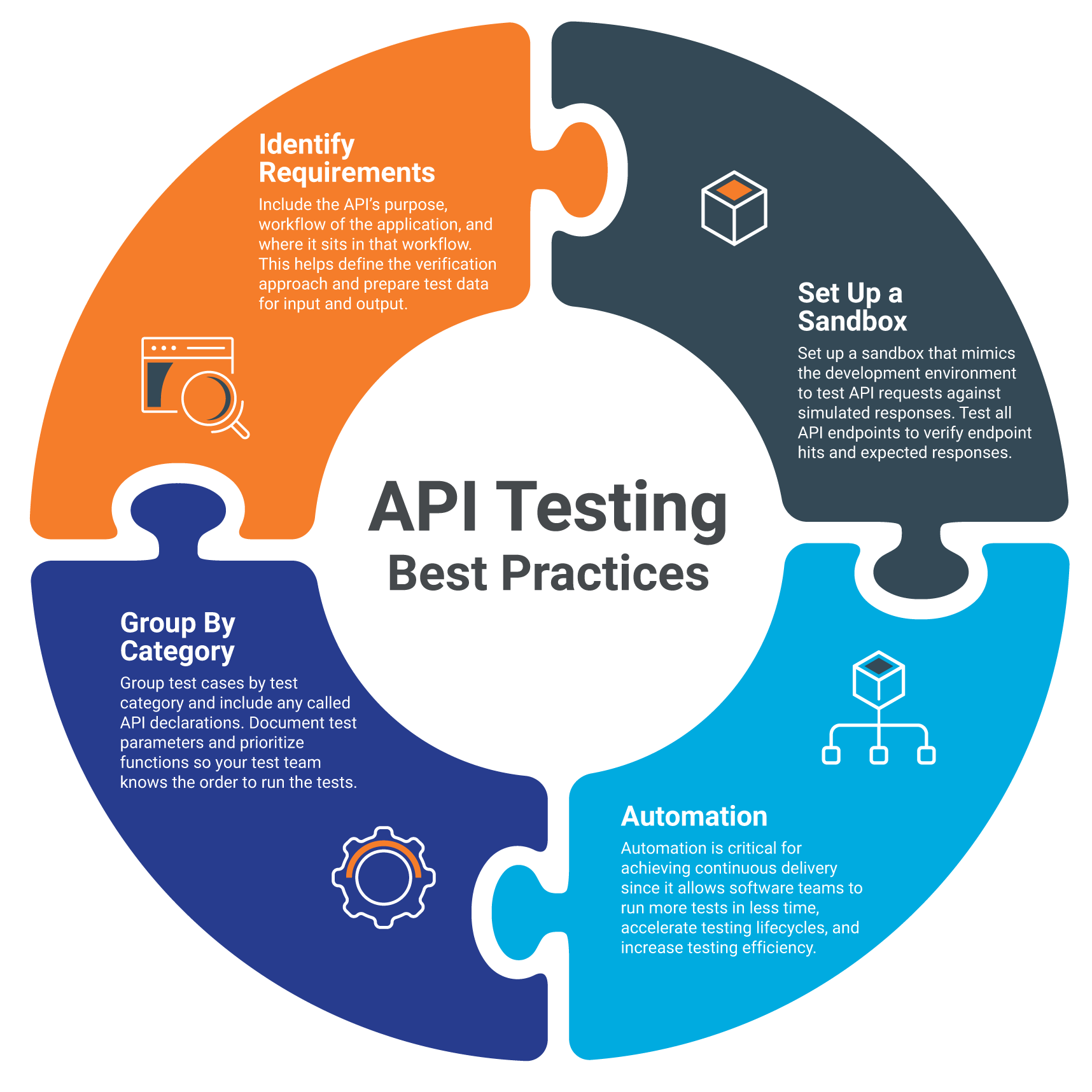
API Performance Testing: Best Practices to Ensure Users Can Always Access Services
What Is API Performance Testing?
APIs play a critical role in application performance by making it easy for internal applications and integrations shared with business partners to talk to each other. Customers benefit from APIs too as they streamline the purchasing of products and services. With APIs, your business can add value to workflows by leveraging advanced technologies ranging from the Internet of Things (IoT) to artificial intelligence, robotics, and social media.
Of course, you also need to make sure your APIs always perform correctly with a consistent and reliable testing process. Otherwise, your end-users and customers will get frustrated!
Testing verifies the business logic of an application at the API level, which connects data layers to user-interface layers. The tests can make requests to a single or multiple API endpoints to determine whether an API meets the functionality, reliability, performance, and security requirements. Software teams can then determine if applications consistently receive the data responses they are looking for and if any performance bottlenecks exist.
Implementing a continuous API testing process represents hitting the sweet spot. That way, the overall software development process keeps moving forward, and developers always know if their applications are delivering what users need.
[adinserter name=”API-ebook-offer”]
Types of API Testing
The first step in devising an API testing program is understanding the different types of API testing methods. The set of tests to run is determined by the functionality of the API and the business criticality of the applications connected by the API. Here’s a quick rundown:
- Unit Testing is one of the most basic forms of API testing. This process runs a single request to a single endpoint, looking for a single response or set of responses. This type of testing is handy when trying to pinpoint the cause of an API issue.
- Integration/Interoperability Testing comes into play for connections with third-party applications and makes sure you and your business partners can properly exchange data sets. You can also test to ensure external applications without proper credentials do not have access.
- End-to-End Testing validates the flow of data among multiple APIs that connect a series of applications to execute a particular process—such as a report that needs to sequentially pull data from multiple databases.
- Performance Testing is used to embed API tests into a CI/CD pipeline used by developers to create the base code of an application. This helps identify any potential API issues early in the software development lifecycle.
- Functional Testing verifies response codes, validates responses, and checks error codes for application functions.
- Load Testing determines if an API can handle a large number of simultaneous users. This helps prepare applications for spikes in activity that might occur without warning. You can also test in advance of knowing when activity will pick up significantly, such as a special promotion or seasonal products.
- Compliance Testing checks to make sure APIs conform to web services standards for addresses, discovery, federation, policy, security, and trust.
Security testing is also important for APIs. It ensures APIs protect an application’s database from other applications by conducting checks to make sure access is given only to authorized sections of a database.
And if you plan to list an application in an application marketplace, the marketplace providers will likely require you to perform API security testing and share the results. In some cases, the providers require their own testing as part of the registration process and will charge a fee for the service.
API Testing Best Practices
Given the nuances of API testing, you will likely benefit from partnering with an external firm that’s familiar with the applications used by your industry. They can help you build a robust program for your particular application environment.
Identify Requirements
There are also a few best-practices to be aware of that can guide you in your conversations with potential partners and help you get a sense of who knows their stuff. For example, at the beginning of your program, identify the requirements of the testing. This includes the API’s purpose, the workflow of the application, and where the API sits in that workflow. This step helps you define the verification approach and prepare your test data for input and output.
Set Up a Sandbox
You should also set up a sandbox that mimics the development environment so you can test API requests against simulated responses. Be sure to test all API endpoints by applying unit and functional testing to verify endpoint hits and expected responses. For these tests, error reporting and monitoring tools will help you analyze traffic to identify trends in service spikes.
Automation
Automation is another key best practice and is helpful for repetitive testing tasks and processes that are difficult to conduct manually. Automation is critical for achieving continuous delivery since it allows software teams to run more tests in less time, accelerate testing life cycles, and increase testing efficiency. Automation is particularly ideal for regression test cases and applications where testing is required before every new release.
Group by Category
Group test cases by test category and include any called API declarations. Also document the test parameters and prioritize functions so your test team knows the order to run the tests. Other keys include setting up self-contained, dependency-independent test cases and developing test cases for all possible API input combinations.
Find More Bugs in Less Time
Once the logic of an application is designed, API tests can be built to immediately validate the correctness in responses and data. The software team doesn’t have to wait for the full application to be built.
In comparison to UI tests, API tests enable you to find more bugs in much less time. When tests fail, you will know exactly where your system is broken and where the defect can be found so you can fix it immediately. This helps reduce the time for triaging bugs between builds and integrations.
Continuous quality testing of APIs is critical. Poorly-tested code could result in unexpectedly high API usage, or worse, it could prevent APIs from working at all. If it’s not easy for developers to consume an API, their productivity will suffer, and so will the applications you rely on to drive your business.
[adinserter name=”API-Closing”]
Recent blog posts

Stay in Touch
Keep your competitive edge – subscribe to our newsletter for updates on emerging software engineering, data and AI, and cloud technology trends.




